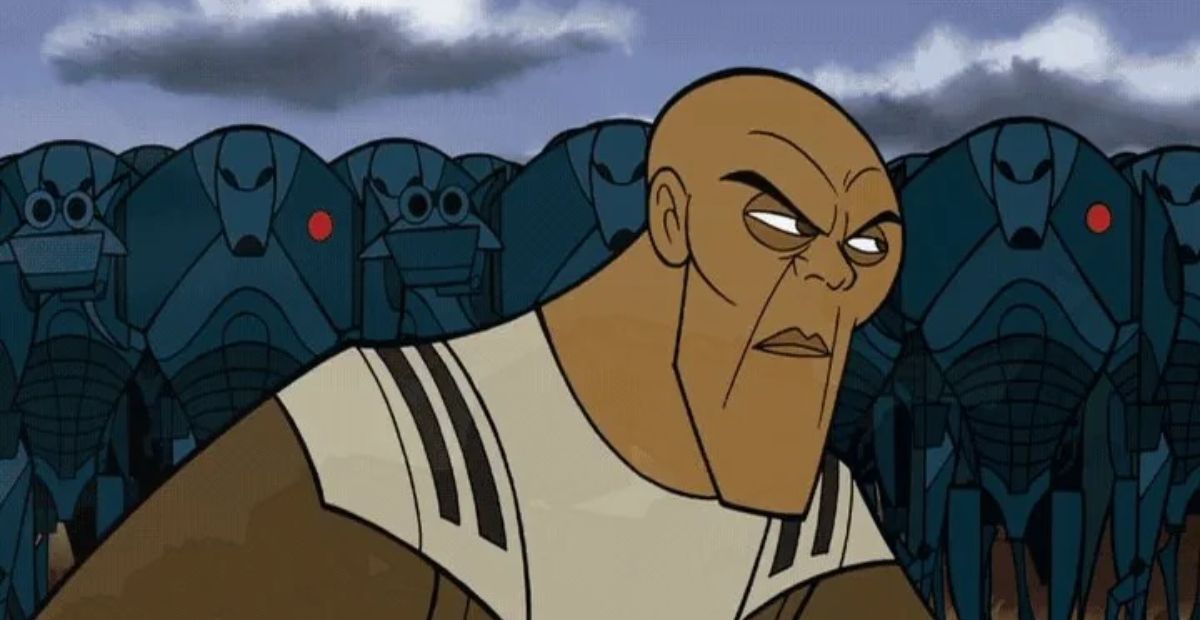Do you remember that 2D-animated Clone Wars series by Genndy Tartakovsky? You know, the one that aired before The Clone Wars hit Disney+. It might not be canon anymore, but honestly? To me, it’s still the ultimate showcase of what Jedi are truly capable of.
This series didn’t just tell us Jedi were powerful—it showed us, with unmatched intensity and larger-than-life battles that made you feel the raw energy of the Force.
Why This Series Stands Out
Let me just say it: Tartakovsky’s Jedi feel like actual legends. In most Star Wars media, Jedi powers are kinda… restrained. Sure, they deflect blaster bolts, move objects, and win lightsaber duels, but they’re rarely as epic as the stories imply. Tartakovsky changes that—he cranks Jedi power to 11, without it ever feeling like over-the-top fan fiction.
Take Mace Windu, for example. One of the most iconic scenes in the series has him fighting an entire droid army without his lightsaber. Just the Force and pure martial skill. He’s out there pulverizing droids with punches that literally ripple through the ground, moving like the battlefield is part of his body. It’s pure poetry in motion, and it screams: This is what a Jedi is.
And it’s not just Mace. Obi-Wan riding into battle on a massive creature? Cool as hell. Anakin going full berserker in a duel with Asajj Ventress? Absolutely electrifying. The series leans into each Jedi’s unique traits, amplifying them into something almost mythical.
Jedi Combat as It Should Be
What I love most is how Tartakovsky makes every battle feel huge. Jedi vs. droids? Jedi vs. Sith? It’s not just combat—it’s clashes of titans. The Force is a living, breathing presence in every fight, shaping battlefields and amplifying emotions.
Take Anakin and Ventress on Yavin IV. Their lightsabers cut through the rain and jungle as if the entire environment is part of their battle. You can feel the raw intensity of their fight—Anakin’s fury and Ventress’s acrobatics are perfectly contrasted, and the jungle itself feels like it’s reacting to their power. It’s insane how much emotion and scale this one scene carries.
Or think about Obi-Wan vs. Durge during the Battle of Muunilinst. Durge regenerates like some unkillable nightmare, and Obi-Wan has to dig deep into his mastery of the Force to take him down. At one point, Obi-Wan literally tears Durge apart from the inside. If that’s not peak Jedi badassery, I don’t know what is.
Why It Still Matters
Okay, so it’s not canon. Who cares? For me, Tartakovsky’s Clone Wars captures the essence of what Jedi should be: mythical warriors capable of shaping the galaxy through sheer will and power.
Sure, the longer-running The Clone Wars series fleshed out the era with more depth, but Tartakovsky’s version doesn’t need hours to make its point. In just a few short episodes, it shows us Jedi at their absolute best—both as combatants and as symbols of something greater.
If you haven’t seen it yet, trust me—you’re missing out. It’s fast-paced, visually stunning, and packed with moments that’ll remind you why you fell in love with Star Wars in the first place. Tartakovsky’s Clone Wars might be the best non-canon Star Wars story out there, and for me, it’ll always be the definitive Jedi power fantasy.
So yeah, go watch it. You won’t regret it.

